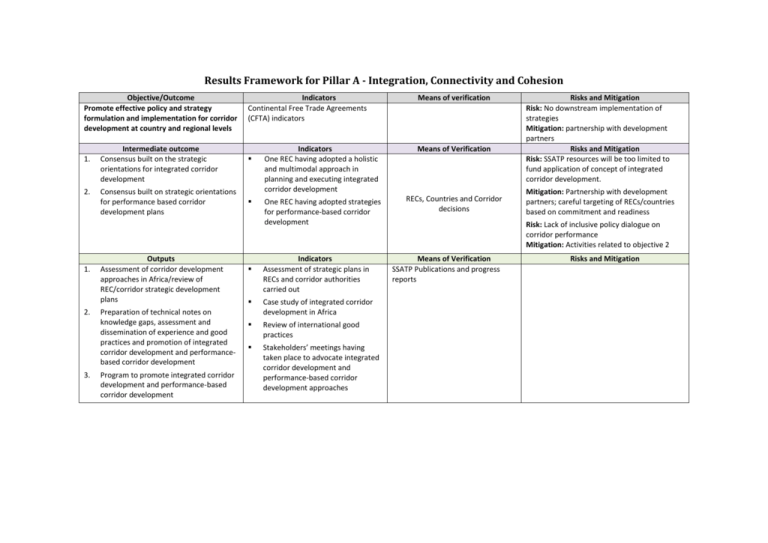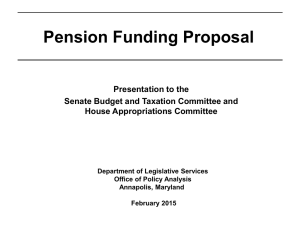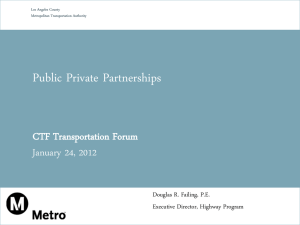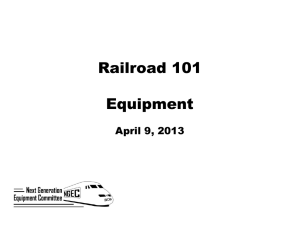Results Framework
advertisement

Results Framework for Pillar A - Integration, Connectivity and Cohesion Objective/Outcome Promote effective policy and strategy formulation and implementation for corridor development at country and regional levels 1. 2. 1. 2. 3. Intermediate outcome Consensus built on the strategic orientations for integrated corridor development Consensus built on strategic orientations for performance based corridor development plans Outputs Assessment of corridor development approaches in Africa/review of REC/corridor strategic development plans Preparation of technical notes on knowledge gaps, assessment and dissemination of experience and good practices and promotion of integrated corridor development and performancebased corridor development Program to promote integrated corridor development and performance-based corridor development Indicators Continental Free Trade Agreements (CFTA) indicators Means of verification Indicators One REC having adopted a holistic and multimodal approach in planning and executing integrated corridor development Means of Verification One REC having adopted strategies for performance-based corridor development RECs, Countries and Corridor decisions Indicators Assessment of strategic plans in RECs and corridor authorities carried out Case study of integrated corridor development in Africa Review of international good practices Stakeholders’ meetings having taken place to advocate integrated corridor development and performance-based corridor development approaches Risks and Mitigation Risk: No downstream implementation of strategies Mitigation: partnership with development partners Risks and Mitigation Risk: SSATP resources will be too limited to fund application of concept of integrated corridor development. Mitigation: Partnership with development partners; careful targeting of RECs/countries based on commitment and readiness Risk: Lack of inclusive policy dialogue on corridor performance Mitigation: Activities related to objective 2 Means of Verification SSATP Publications and progress reports Risks and Mitigation Objective/Outcome Develop capacity among institutions1 for inclusive policy dialogue on regional integration 1. 2. 1. Intermediate outcome Capacity building to ensure that institutions are: sustainable, inclusive, and have adequate monitoring and diagnosis tools Continental framework for cooperation in place through the REC TCC Outputs Capacity review of regional integration institutions, including funding needs and ways to involve stakeholders 2. Assistance for establishment and expansion of Transport Observatories 3. Support to mechanism regional Indicators One institution meeting capacity criteria (must be sustainable, inclusive, and have monitoring and diagnosis tools) Indicators Capacity development plan prepared in one institution including financing framework with composition of institution reflecting diversity of stakeholders (control agencies / logistics operators, traders / agricultural producers, CSO) Indicators on corridor performance published One institution has agreed to host the REC TCC coordination 3 Indicators Capacity review and capacity development plan approved by one institution with funding framework for the institution identified and strategies prepared to engage, involve and inform stakeholders Two Regional Economic Communities with unit created with corridor performance monitoring responsibility 2 REC TCC meetings per year during four years Means of verification Institution Charters Risks and Mitigation Risk: Formal existence but no real means for implementation Mitigation: capacity building Means of verification Budget of the institutions Decision of the institutions Transport Observatories Reports Risks and Mitigation Risk: Lack of political will Capacity of the Governments to contribute to institutions Mitigation: Advocacy Decision Means of verification Study report Risks and Mitigation Decision by the institution Report from RECs/corridor authorities Institutions refer to RECs, Corridor authority, National Facilitation Committees (aligned on a corridor), Industry associations (national or regional federations Objective/Outcome Promote efficient logistics services Indicators Decrease of total logistic cost on selected corridors Means of verification Data collected by Transport Observatories Intermediate outcome Regulatory framework in place per type of logistic service: Indicators Number of countries having adopted revised regulatory framework Means of verification RECs / Countries gazettes Indicators Three case studies carried out. Each case study covers: Analysis of the problems Means of verification Decisions from RECs/countries Trucking services C&F Terminal operators Rural logistics Railways Inland waterways Control agencies (Customs) Single Windows Outputs For each type of logistics service, a case study: 1. Analysis of the problems 2. Preparation of reform scenarios and review of options 3. Quantification of the cost of inaction 4. Political Economy analysis 5. Assessment of capacity development / training needs for operators Preparation of reform scenarios and review of options Quantification of the cost of inaction Political Economy analysis Assessment of capacity development/training needs for operators Risks and Mitigation Risk: Increase in input costs may distort the results Mitigation: adjust with evolution of prices Risks and Mitigation Risk: Reluctance of operators / agencies to revise regulatory framework Mitigation: Political economy analysis assessing willingness / identifying champions to initiate reform Advocacy work on the cost of inaction Risks and Mitigation








